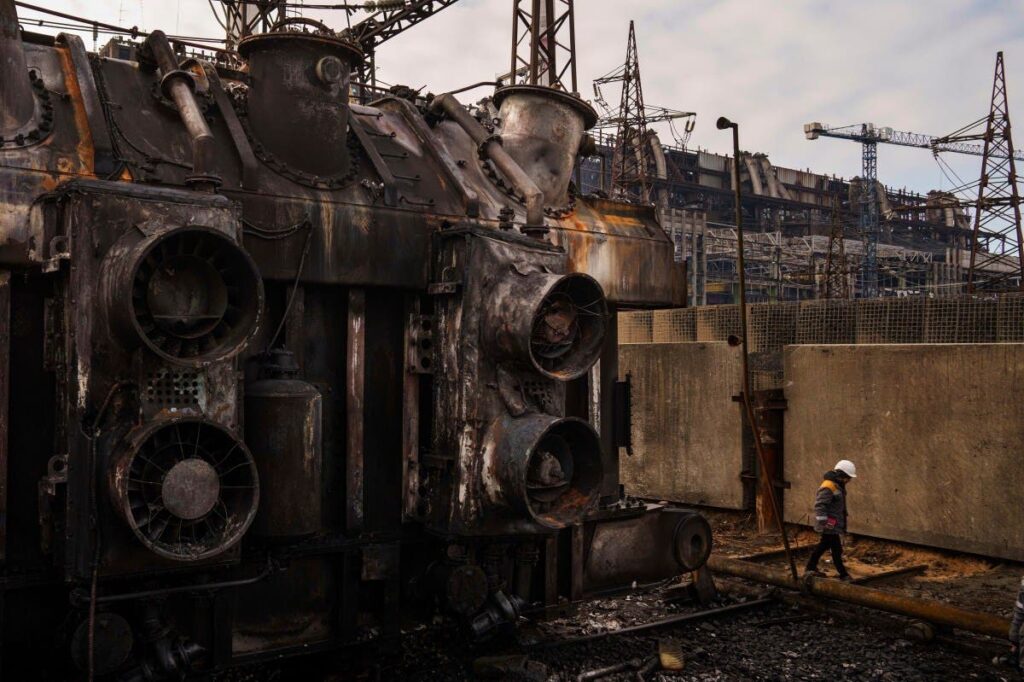Russia struck Ukraine’s power grid overnight, continuing a wartime tactic of targeting energy infrastructure in the ongoing three-and-a-half year long war.
Newsweek has reached out to Russia’s foreign ministry and Ukraine’s energy ministry for comment via email on Sunday.
Why It Matters
The strike comes as temperatures drop and winter nears. Both Russia and Ukraine have targeted each other’s energy infrastructure, especially in the fall and winter, to strain the other’s supplies during the season’s brutal cold.
Since Russian President Vladimir Putin led a full-scale invasion of Ukraine in February 2022, which was launched years after Moscow annexed Crimea in 2014, both sides have seen energy infrastructure at the center of the war.
The Russian-occupied Zaporizhzhia nuclear power plant in Ukraine, Europe’s largest, recently went over a week without external power, raising fears of overheating and a possible meltdown. On Thursday, authorities said work to restore external electricity had begun.
What To Know
Russia hit several energy facilities across the country, including in Donetsk, Odesa and Chernihiv, the Ukrainian Energy Ministry said. The ministry said in Ukrainian on Telegram: “Rescuers of the State Emergency Service and the energy sector are working to stabilize the situation with electricity supply as soon as possible.”
The Russian Defense Ministry confirmed Russian troops carried out strikes on Ukraine’s fuel and energy infrastructure, according to state-run outlet Tass.
Some of the strikes caused injuries. Odesa Governor Oleh Kiper wrote in Ukrainian on Telegram that Russia struck and damaged “a gas infrastructure facility” in the region, which led to a fire outbreak. He said one woman was injured.
In the Kyiv region, two employees of a Ukrainian energy company were wounded in strikes on a substation, according to Governor Mykola Kalashnyk.
Ukrainian President Volodymyr Zelensky called out the recent strikes in an X post, writing, “Russia continues its aerial terror against our cities and communities, intensifying strikes on our energy infrastructure.” He stated that Russia set off “more than 3,100 drones, 92 missiles, and around 1,360 glide bombs” on Ukraine over the past week.
In a post hours later, Zelensky added: “Putin escalated the situation at the Zaporizhzhia Nuclear Power Plant, and Russia has also made its attacks on our energy more vicious – to compensate for their failure on the ground.”
Earlier this week, a Russia strike, which injured at least 20 in Kyiv, caused blackouts across the country. Prime Minister Yuliia Svyrydenko described it as “one of the largest concentrated strikes” against Ukraine’s energy infrastructure, according to the Associated Press.
Ukraine has also hit back on Russian oil refineries, saying earlier this week it struck Korobkovsky Gas Processing Plant.
What People Are Saying
European Commission’s Ditte Juul Jørgensen said in September: “For us, the phasing out of Russian energy is a lasting phase out, it is not a temporary block due to the war [in Ukraine], it is a decision that reliance on imports of fossil fuel from Russia is a risk to our security.”
Jessica Berlin, a senior fellow at Center for European Policy Analysis, said in a Sunday X post: “Russia bombs Ukrainian energy infrastructure to terrorize civilians and destroy their country. Ukraine bombs Russian energy infrastructure to defend civilians and destroy the Kremlin war machine. There is no equivalence between the two.”
Russian President Vladimir Putin said in a video clip released on Sunday by Russian state television reporter Pavel Zarubin, reported by Reuters, that if the U.S. gives Ukraine Tomahawk missiles, it “will lead to the destruction of our relations, or at least the positive trends that have emerged in these relations…This will mean a completely new, qualitatively new stage of escalation, including in relations between Russia and the United States.”
Maciej Zaniewicz and Danylo Moiseienko, analysts for Forum Energii, wrote in an October 7 research piece published at The Brookings Institution: “Ukraine’s energy infrastructure is now deeply damaged, operating at only about a third of its pre-invasion generation capacity. This critical state is the result of relentless Russian assaults intended to cripple Ukraine’s economy and undermine its population’s resolve to resist Russian aggression, with the ultimate goal of compelling the Kyiv government to surrender.”
Belarussian President Alexander Lukashenko told reporters recently: “Russia is advancing on the front. I say this responsibly, because I observe it practically every day. And this will lead to the disappearance of Ukraine as a state.”
What Happens Next?
As winter approaches, electricity outages cause real concern. Zelensky said he spoke with U.S. President Donald Trump for a second time in recent days, writing on X, they discussed “defense of life in our country, strengthening our capabilities – in air defense, resilience, and long-range capabilities. We also discussed many details related to the energy sector. President Trump is well informed about everything that is happening.”
Trump, meanwhile, has not confirmed if the U.S. will be providing Ukraine with Tomahawk missions to fight Russia.
Read the full article here

